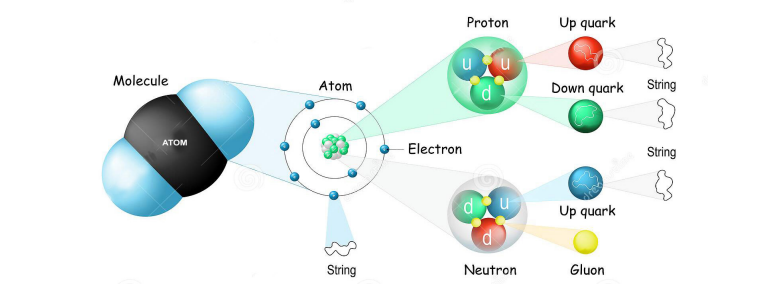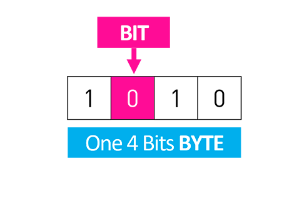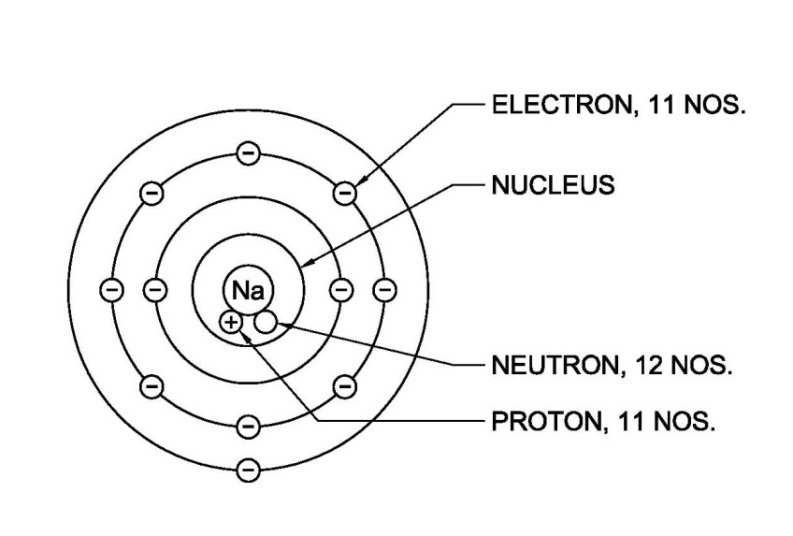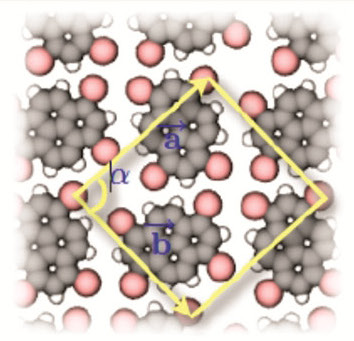Dr. Ediho Lokanga

Abstract: Many researchers are dissatisfied with physics’ current Standard Model (SM), pointing out its shortcomings despite several successes and achievements. They are openly calling for a new approach or new physics. Furthermore, the writer points out the lack of references to consciousness in all the major theories of physics, as the founders of quantum theory gave it a special place. In this article, the author calls for an interdisciplinary perspective and proposes a new approach to physics that considers recent advances in theoretical physics, computer science, self-organization theory, and consciousness to develop a new physics theory.
1. Introduction
Despite over a century of research in theoretical physics to find the theory of everything (ToE), no tangible result has come out. Physicists are hard-pressed to produce an extraordinary theory explaining everything in the universe. They are busy attempting to synthesize quantum and relativistic physics. The overwhelming view of physics is based on particle physics’ standard model (SM). For an interesting discussion, consult the writing by Papazoglou (2023). The SM of physics is the theory of particles, fields, and the fundamental forces (electromagnetic, weak, strong, and gravitational) that govern them. The SM informs us that everything in the universe comprises atoms; in turn, atoms are composed of electrons, protons, and neutrons and are made of elementary particles called quarks. There are six types of quarks. These are named up, down, charm, strange, top, and bottom (CERN, 2024).
We should change our approach to the overwhelming mechanical and materialistic view of the universe and think of an atom as an intelligent entity that processes information, computes, self-organizes and is embedded with consciousness.
In total, an atom is made up of seventeen particles: these particles are: up quarks, down quarks, strange quarks, charm quarks, top quarks, bottom quarks, electrons, electron neutrinos, muons, muon neutrinos, tau, and tau neutrinos, etc. These are the particles that make up matter and mass according to the SM. Figure 1.1 shows an illustration of the SM of elementary particles.

The SM has several successes and achievements, which are well documented. One of them is the coherent explanation of the three primary forces of nature: the electromagnetic, the weak and the strong. But so far, gravity has remained elusive. In this course, several approaches have emerged. The most prominent include:
- String theory (ST): Replaces the point-like particles of particle physics with one-dimensional objects known as strings (Brian, 1999). Each string vibrates at different frequencies, and each vibration gives birth to a different particle, see Figure 1.2.
- Loop quantum gravity (LQG): This theory of quantum gravity attempts to develop a quantum theory of gravity based directly on Albert Einstein’s geometric formulation rather than treating gravity as a mysterious force. One of its main conclusions is that gravity should be quantized (Rovelli, 1998).
- Causal sets: This approach to quantum gravity postulates that spacetime is fundamentally discrete. The spacetime continuum is replaced by locally finite posets, alternatively known as causal sets (Surya, 2019).
- Euclidean quantum gravity: This is another approach to quantum gravity that uses the Wick rotation to describe the force of gravity according to the principles of quantum mechanics.
Topological quantum field theory (TQFT): Topological field theory is a quantum field theory that computes topological invariants. - Etc.

In the following pages, I discuss SM’s achievements and shortcomings and explain why physicists should consider incorporating new elements into the model or move on. Although several alternatives have been put in the past, I will show why they have not been successful. One of the leading ToE is known as string theory, which has been very successful in its applications in various fields of mathematical physics (Smolin, 2008; Maldacena, 1998), but unfortunately, despite the billions that have been invested over the last fifty years or so it cannot, at this stage, offer any falsifiable predictions. Consequently, this is one of the reasons its validity is questioned, as it cannot be experimentally tested.
One of the main reasons may be that string theory and all the above-named quantum theories of gravity were built without incorporating information and consciousness in their makeup. The other reasons are about what matter is made of. We are fully aware of what matter is made of according to the SM, but at the same time, we learn that when a quark and an anti-quark meet, they annihilate and become a photon. The latter is an electromagnetic wave, which moves around and carries information. Now, let me ask a question: Is matter made up of a physical entity? The answer seems to be no.
Atoms are tiny so-called particles that move around and carry information. For instance, when hydrogen and oxygen atoms combine to produce water, they compute and exchange information. Oxygen and hydrogen bind together to form water molecules. As they merge, each atom calculates the optimal angle and distance to attach it to the others – the three atoms behave intelligently. Kelly (2004) informs us that oxygen uses yes/no decisions to evaluate all courses toward the hydrogen atom and then usually selects the optimal 104.45 degrees by moving toward the other hydrogen atom at that very angle.
The hydrogen atomic number is 1, made of one electron and a proton. It does not have a neutron. On the other hand, the atomic number of oxygens is 8, meaning it has 8 protons, 8 electrons and eight neutrons. The outcome of their reaction is a water molecule with 10 protons, 10 electrons and eight neutrons. When hydrogen and oxygen combine to produce water (computation is at work) and self-organization by moving closer to each other, the information each other holds (atomic number) cannot do anything apart from its movement, carried by energy, and it needs intelligence to organize itself.
We have now learned that everything in the universe is made up of atoms but also of information (Dodig-Crnkovic, 2012). When atoms combine, they perform several operations, self-organize themselves and present us with what we see and touch. Various theories of physics have neglected this vital aspect, only focusing on matter and energy. Other variables are in action whenever atoms combine. Matter and energy are not enough to understand the universe. Other factors such as information, computation, and self-organization must be considered to progress in the ToE quest. In this paper, I argue why a new physics is needed. Let us welcome what I call:
2. The Standard Model of Physics (SM)
Here, I would like to put things into perspective and explain why a new physics model is needed. Therefore, I would like to discuss the successes and achievements of the SM and its shortcomings, including the outstanding problems that have not been resolved so far.
2.1 Successes and Achievements of the SM
Hirschauer (2017) discusses the many achievements of the SM and points out that it has successfully explained many aspects of the natural world. Furthermore, Pomeroy (2022) stresses that the SM is our most successful theoretical physics model despite its inability to explain everything in the universe. Some of these successes and achievements include, but are not limited to, the following:
- Experiments have confirmed the predictions of the SM of particles and illustrated in the electroweak sector and quantum chromodynamics.
- The SM predicted the existence of the W and Z bosons, gluon, top quark, charm quark, and many of their properties before they were observed.
- The predictions of the existence of the Higgs boson were successfully confirmed experimentally with good precision.
- How particles and three of the forces are related to each other.
- A solution to how gravity works at the microscopic level may be getting closer. Researchers from the UK, Netherlands, and Italy have detected a weak gravitational pull on a tiny particle (Leach, 2024). But I would like to add that this is ongoing research and is yet to be replicated.
2.2 Shortcomings of the SM
Despite its successes, it has several shortcomings. An article in The Economist (2022) informed us that several experiments conducted over the last few years contradict the SM. For instance, it has been found that some bosons, quarks, and muons are not behaving as they should have or as expected. The theory appears incomplete and cannot be considered a complete description of nature.
- One of the most significant shortcomings to date is gravity. Pomeroy (2022) laments that SM cannot explain gravity at the microscopic level. Fardaei has described the issue of gravity in detail. He argues that we have been wrong in our belief and understanding of gravity. He says:” Gravity is not an unknown force coming from a mass.” (Fardaei, 2018, p.1). Using a quantum mechanical approach, he explains that an internal force within the atom creates gravity and that we should look at the building block of atoms, not anywhere else.
- Another one is the cosmological constant problem (the small but non-zero measured value of the cosmological constant).
- Investigation into the possible existence of dark matter and energy has been inconclusive (Sawangwit and Shanks, 2010; Ascensio and Kroupa, 2023).
- The fine-tuned description of the Higgs boson mass (Riva, 2021).
3. Beyond the Standard Model: The Physics of Information, Computation, Self-Organization and Consciousness
Discussing the SM, Zhang et al. (2023) suspect somehow that there is a new physics beyond the current model and that we should be searching for it. Similarly, Paudel (2021) discussed the problems with the SM and possible solutions to move the theory forward. Lokanga (2022) addressed the need for a new physics in many of his publications, including his last book. Furthermore, in the book The Universe Revealed by Fardaei (2023), one can find several propositions and recommendations regarding atoms’ behavior that may advance the field of theoretical physics. For instance, Fardaei argues that atoms are not mechanical entities but rather intelligent and that the intelligence embedded in them runs the universe, thus emphasizing the role of consciousness. It appears now that because of the several shortcomings, many theoretical physicists are calling for an alternative or a new physics that goes beyond the current SM and answers several fundamental unanswered questions.
The author hopes that the new field of the physics of information, computation, self-organization, and consciousness may offer a possible solution. However, despite considerable academic interest in the field, as mentioned above, only limited research exists concerning physics. The new model encompasses the successes and achievements of the SM but takes it a step further. The new field (new physics) is based on the universe’s computational, self-organization, and consciousness model (Lokanga, 2017a, 2017b, 2018a, 2020a, 2020b, 2022, 2024). In the following pages, I will discuss the model, starting with the computational model and then the self-organization and consciousness models.
3.1 The Computational Model
The computational model is a theoretical attempt to build a new physics, or a ToE based on the concept of information and computation (Lloyd, 2006; Wolfram, 2002; Landauer, 1999; Wheeler, 1989; Lokanga, 2017a). Some of the proponents of this model argue that the universe computes and is a self-computing consciousness (Sas, n.d; Lokanga, 2022). First, let me discuss the meaning of two of the most critical aspects of the computational model. These are information and computation.
3.1.1 Information
What is the meaning of information? Information is not self-explanatory. It exists only as a potential and needs a medium to manifest. Also, we know that information can be transmitted or communicated instantaneously, this is because the universe has a holographic structure. The holographic universe theory teaches us that there is no energy transmission between particles or objects during entanglement, but only information is exchanged or shared (Bohm, 1981). As a result, it appears that there is no violation of Einstein’s special theory of relativity (Lokanga, 2018, p.127). Furthermore, several researchers argue that the holographic principle shows that the universe fundamentally operates as an information system, with reality holographically encoded (‘t Hooft, 2000). Everything in the universe is interconnected through information rather than energy transmission. Entangled particles are non-locally connected with their properties and are instantaneously linked regardless of distance or spatial separation (Lokanga, 2018).
For instance, one can get direct information about a physical object’s properties, such as a star in the sky or a nearby tree. Amongst several of the definitions, Bates defines information:” as the pattern of organization of matter and energy” (Bates, 2006, p.1033).
There are many types of information, such as biological, physical, chemical, and holographic. Let me discuss the three types of information.
Biological information (Gene): A genetic program found in living organisms – a gene is the fundamental unity of heredity passed from parent to child. Genes are made up of DNA, each chromosome contains many genes, figure 3.1. The biological information is transmitted to our offspring.

Physical information: We have two types of physical information: binary digits (bits) and quantum bits (qubits).
A bit stands for binary digit, the smallest unit of computer data. A bit has a single binary value, either zero or one. An example is shown in Figure 3.2. In addition, the growth and knowledge amassed in the technology of digitization over the last ten years or so have seen a significant amount of work done in science, literature, and technology, such as biology, genetics, books, novels, music, film, scientific equations, encapsulated into the basic notation of computation. For instance, how is this information on a CD or DVD represented and encoded? Under the commonly agreed coding scheme, ASCII (American Standard Code for Information Interchange), each letter or keyboard character is given a seven-bit code word. For instance, the following letters (THE), see table 3.1. correspond to the characters:

| Characters | Numbers (Bit codeword) |
| T | 1110100 |
| H | 1101000 |
| E | 1100101 |
A word such as “THE” comprises bits 1110100 1101000 1100101, showing that adding more bits can produce a thousand pages of a book.
A qubit stands for a quantum bit. In quantum computing, this is the basic unit of quantum information and is the quantum version of the classical binary bit, as shown in Figure 3.3. Quantum computing is a branch of physics that studies and uses the laws of quantum mechanics to solve problems too complex for classical computers.

Chemical information: Chemical information (atomic number) encoded by a structure; for instance, the atomic number of sodium is 11. That means sodium has 11 electrons, 11 protons, and 12 neutrons surrounding it. The nuclear structure of sodium is shown in Figure 3.4.

3.1.2 Computation
What do I mean by computes? There is some ambiguity in defining the word computation (Akl 2013). There are several definitions. However, to date, several researchers agree that:
- Computing is about processing information.
- Computation is a mathematical calculation that includes both arithmetical and non-arithmetical steps.
- Everything in the universe processes information, which means that it computes. Some examples of computation are illustrated in Table 3.2. These examples demonstrate that the universe is simply an information-processing system programmed to do specific tasks and that natural computers are information-processing systems.
| Natural computers | Operations conducted |
| Plants | Plants’ leaves appear to regulate their “breathing” by conducting simple calculations; green plants engage in problem-solving computation. The ongoing computation process appears to take place when tiny holes in leaves open and close. Plants seem to regulate their uptake and loss of gases by what appear to be distributed computations. Chemical reactions in plants help cells perform fundamental computations, such as addition, subtraction, or multiplication (Lokanga, 2017b). |
| Brain | The brain computes, performs holographic computation, and communicates nonlocally and holographically (Lokanga, 2018a, 2020a, 2020b, 2022). |
| DNA | Perform replication. |
| Cells | Perform multiplication. |
| Particles | Atoms register bits of information. For instance, when two particles collide, each registers information that is transformed and processed. When two atoms combine, they perform and, or, not, or copy operations (Lloyd, 2006). |
3.1.3 Summary of the Computational Model
The computational model of the universe teaches us that:
- Everything in the universe is made up of atoms but also of information (physical, chemical, or biological).
- Atoms register bits or qubits of information, which is then transformed and processed.
- When atoms combine, they perform several types of operations.
- The universe is the result of information processing.
- The universe computes and is a self-computing system.
- Computation takes place at the smallest spacetime scale.
- The universe is a computational machine or a network of computational processes.
3.2 The Self-Organization Model
Table 3.2 shows several examples where computation and self-organization are taking place at the same time. For instance, when two atoms combine, they can compute, self-organize, and produce a molecule. What is then self-organization?
- Self-organization is the physics of information processing in complex systems.
- Self-organization is the evolution of a system into an organized form without external pressures (Lucas, 1997).
- Information tends to its preferred most probable state” (Gershenson, 2012, p.8).
- Self-organization is achieved in nature through different means. In natural phenomena, such as biological systems and physical systems, information organizes itself.
- Self-organization shows the presence of intelligence, a lower form of consciousness that helps organize everything.
- Consciousness is at the center, though it is often not recognized.
- Information cannot do anything. Apart from its movement, carried by energy, it needs intelligence to organize itself.
3.2.1 Examples of Self-Organization
Snowflakes Figure 3.5 exhibits complex patterns—the result of the chaotic process of supercooled water droplets colliding and freezing as they fall from the sky.

Molecular self-assembly: Shown in figure 3.6 is a chemical process whereby molecules self-organize into a predictable structure without outside control.

Self-organization of atoms: Figure 3.7 shows that atoms can automatically arrange themselves into an orderly row with equal distances between neighbors when trapped between a pair of optical fibers and hit with laser light.

3.3 The Consciousness Model
3.3.1 The views of the founders of quantum theory
I understand that the pioneers of quantum theory gave a central position to consciousness. Unfortunately, because of the theory of evolution and the rise of the Bing Bang theory, many scientists wanted nothing to do with non-material things. I have some reservations about the Bing Bag theory, which has been discussed in some of my publications. The laws must precede the action or the chemical reaction; they must be there before the beginning. Similarly, I have doubts regarding some of the explanations of the theory of evolution in its current form. There are still several unanswered questions. For instance, has the process of evolution stopped in monkeys? Despite several centuries of evolution, the latter cannot build houses, go to school, etc. I should know!
Let me get back to the views of the founders of quantum theory. Some of their perspectives include:
Max Planck: “I regard consciousness as fundamental. I regard matter as derivative from consciousness “(quoted in Sullivan 1931).
In addition, as rightly pointed out by Sunderland (2015):
Von Neumann: “Consciousness, whatever it is, appears to be the only thing in physics that can ultimately cause this collapse or observation.”
Eugene Wigner: “It is not possible to formulate the laws of quantum mechanics consistently without reference to the consciousness.”
3.3.2 What is consciousness?
In my preceding discussion, I mentioned that self-organization shows the presence of intelligence or a lower form of consciousness that helps organize everything in the universe. I mean here that consciousness is the master key, but it is often not recognized or acknowledged. In addition, information in the universe cannot do anything by itself; apart from its movement, which is carried by energy, it needs intelligence to organize itself.
There are several definitions (Lokanga, 2024, p.19). Some of them include:
- “The faculties of mind, intellect, and personality are simply manifestations of consciousness.”
- “The non-material part of us is consciousness, soul, or spirit, and the body is simply the means through which consciousness expresses itself and experiences the world.”
- “Spirit, consciousness, inner self, anima/animus, life energy, essence, or “I” are mostly synonyms for the word soul.”
- “Consciousness operates throughout the body. It is not the physical body responsible for our actions but the consciousness or thinking that forms the body’s operating system.”
- “It is I, the self, or the soul. The soul uses the word “I” for itself and “my” when referring to the body: my hand, my mouth, my brain, and so on. I am different from my body.”
3.3.3 Types of Consciousness
Ullman (1999) argues that there are two types of consciousness: waking and sleeping. These two forms of consciousness are found in human beings and other entities, such as animals, who experience them differently.
Waking consciousness is associated with being awake, which means that consciousness is active when we are awake and that throughout the day, our level of awareness varies depending on what we are doing. During the day, we are aware of our surrounding environment.
During sleep, our sleeping consciousness can see, hear, and move. That is why, in a dream, there is no need for a physical body. Furthermore, we can perceive without a brain and move around without our physical body. Therefore, consciousness is a multidimensional, timeless entity with access to the present, past, and future simultaneously.
3.3.4 Properties of Consciousness
Several scholars have discussed several properties in various publications. Among the few:
- Africans posit that consciousness is a creative force that shapes the universe or nature (Lokanga, 2022).
- Consciousness is everywhere – a field that extends through all of space (Matloff, 2017).
- Consciousness is an independent entity capable of living outside the body (Froböse, 2014).
- Creates time or the perception we call time.
- Moves from one body to a new one at the time of death.
- Can see, hear, and feel.
- Consciousness is not restricted by spacetime.
- Immune to pressure, temperature, or any other external conditions, etc.
I have discussed the four combined models that form a coherent model of the new physics. It is now time to summarise and conclude with suggestions regarding the way forward.
4. Conclusion
We have learned from the SM that everything in the universe is composed of atoms; in turn, atoms are composed of protons and neutrons made of elementary particles called quarks, etc. But we now know from the physics of information, computation, self-organization, and consciousness that the universe comprises information beneath the particles. It computes (process), self-organizes itself and is embedded with consciousness. It behaves like an intelligent, self-computing consciousness. One of the outstanding issues is what matter, or the universe, is made of. We learn from information, computation, self-organization, and consciousness that an atom also comprises information, computes, self-organizes and behaves as an intelligent entity. To solve several of the issues surrounding the SM of physics, we should embrace and incorporate the new physics, change our approach to the overwhelming mechanical and materialistic view of the universe and think of an atom as an intelligent entity that processes information, computes, self-organizes and is embedded with consciousness. The writer believes that this is one of the approaches we should use to solve the many outstanding issues in physics and the quest for the theory of everything.
5. References
Adolphe, C. (2007). A quantum state of a two-level quantum system [image]. Retrieved from en.wikipedia.org/wiki/Qubit#/media/File:Simple_qubits.svg
Akl, S. G. (2013. September 16). Nonuniversality in computation: Thirteen Misconceptions Rectified. Technical Report No. 2013-609. Retrieved from research.cs.queensu.ca/ home/akl/ techreports/thirteen.pdf
Ascensio, E., & Kroupa, P. (2023, March 08). Two upcoming on-line meetings on the cosmological crisis. Retrieved from darkmattercrisis.wordpress.com/.
Bohm, D. (1981). Wholeness and Implicate Order. London: Routledge and Kegan Paul.
Brian, G. (1999). The Elegant Universe, superstrings, Hidden dimensions, and quest for ultimate theory. New York, USA: W.W. Norton Company
Brian, G. (1999). Vectors diagram of particle [image]. Retrieved from researchgate.net/publication/359480985_Problems_of_Standard_Model_Review
Britannica. (2024, March 10). Atom summary. Retrieved from britannica.com/ summary/atom.
Bussey, M. (2011). Microvita and Other Spaces: Deepening Research through Intuitional Practice. Journal of Futures Studies, 16(1), 137-150.
CERN. (2024, March 18). Higgs Boson. Retrieved from cms.cern/ physics/higgs-boson.
Chalmers, D. (1995). Facing up to the problem of consciousness. Journal of Consciousness Studies, 2 (3), 200–219.
Chang, D.E., Cirac, J.I. & Kimble, H.J. (2013). Self-organization along a Nanophotonic Waveguide. Physical Review Letters, 110 (113606), 1-6.
Chang, Cirac, and Kimble. (2013). Trapped atoms. [image]. Retrieved from physics.aps.org/articles/v6/30
Cooper, K. (2022, March 08). What is the Standard Model? Retrieved from space.com/standard-model-physics.
Debczak, M. (2017, March 10). See How to Grow Snowflakes Inside a Soda Bottle. Retrieved from mentalfloss.com/article/ 72881/how-grow-snowflakes-inside-soda-bottle.
Dodig-Crnkovic, G. (2012). Information and Energy/Matter.” Information, 3, 751-55.
Fardaei, J. (2018). The Mechanics Universe. Washington, USA: Kindle Direct Publishing.
Fardaei, J. (2018). Gravity is a Myth. Journal of Physics Research and Applications, 2(2), 1-13.
Fardaei, J. (2023). The Universe Revealed. Pennsylvania, USA: Fulton Books.
Froböse, R. (2014, May 17). Scientists Find Hints for the Immortality of the Soul. Network Review Winter, p.15. Retrieved from explore.scimednet.org/wp-content/ uploads/2016/04/Network-116-final-1.pdf
Gauthier, R. (1993). Microvita: A New Approach to Matter, Life, and Health. Proceedings of the Second Gauss Symposium on Biomedical and Life Physics, Munich, August 2-8, 1993, 348-58.
Gershenson C. (2012). The World as Evolving Information. In A. A. Minai, D. Braha, and Y. Bar-Yam (Eds), 100–15. Unifying Themes in Complex Systems VII. Berlin, BE: Springer. doi.org/10.1007/978-3-642-18003-3_10
Hirschauer, J. (2017, April 11). Searching for new particles at the Large Hadron Collider. Sambamurti Memorial Lecture. Retrieved from sambamurti.phy.bnl.gov/ samba/hirschauer_ sambamurti.pdf
Janeklass (2021). Snowflake. [image]. Retrieved from commons.wikimedia.org/wiki/ File:Snowflake_(lumehelves).jpg
Kelly, K. (2004, November 01). God Is the Machine. Retrieved from http://www.wired.com/ wired/ archive/10.12/holytech_pr.html.
Landauer, R. (1999). Information is a physical entity. Physica A-statistical mechanics and its Applications, 263, 63-67.
Lloyd, S. (2006). Programming the Universe: A Quantum Computer Scientist Takes on the Cosmos. New York, USA: Vintage Publishing.
Lokanga, E. (2017a). Digital Physics: The Universe Computes. Washington DC, USA: Euclid University Press.
Lokanga, E. (2017b). Digital Physics: The Universe is a Programmed System. Washington, USA: CreateSpace Independent Publishing Platform
Lokanga, E. (2018a). Digital Physics: The Meaning of the Holographic Universe and Its Implications Beyond Theoretical Physics. Washington, USA: CreateSpace Independent Publishing Platform
Lokanga, E. (2018b). Digital Physics: The Physics of Information, Computation, Self-Organization and Consciousness Q&A. Washington, USA: CreateSpace Independent Publishing Platform
Lokanga, E. (2020a). A Special Relationship between Matter, Energy, Information, and Consciousness. International Journal of Recent Advances in Physics, 9 (1/2/3), 1–13.
Lokanga, E. (2020b). Toward a Computational Theory of Everything. International Journal of Recent Advances in Physics, 9 (1/2/3), 13–32.
Lokanga, E. (2022). Digital Physics: Consciousness is Primary. London, England: Kwantum Publishing.
Lokanga, E. (2024, March 27). The Universe Computes Hypothesis and Its Implications for the Theory of Everything (ToE). Scholars International Conference on Physics and Quantum Phys. Theme: Highlighting innovations and challenges in the field of Physics and Quantum Physics. 25-26 March 2024 Barcelona, Spain. Retrieved from researchgate.net/ publication/379543848_Conference_Proceedings_Book.
Lucas, C. (1997, September 08). Self-Organising Systems FAQ. Retrieved from mountainman. com.au/news97_h.html.
Maldacena, J. M. (1998). The Large N-Limit of Superconformal Field Theories and Supergravity. International Journal of Theoretical Physics, 2, 231–52.
Marcia, J.B. (2006). Fundamental Forms of Information. Journal of the American for Information Science and Technology, 57(6), 1033-1045.
Matloff, L. G. (2017). Stellar Consciousness: Can Panpsychism Emerge as an Observational Science? EDGESCIENCE, 29 (9), 9–14.
Oakley, M. (2019). Bit [image]. Retrieved from mikeoakley.com/wiki/101-bit-byte-bitdepth/
Papazoglou, A. (2023, March 01). We Need New Physics, Not New Particles. Retrieved from realclearscience.com/2023/09/28/ we_need new_physics _not_new_particles _982477.html. Paudel, E. R. (2022). Problems of Standard Model, Review. BMC Journal of Scientific Research, 4(1), 65-73. PBS NOVA. (2019). Fundamental particles of an atom [image]. Retrieved from en.wikipedia.org/wiki/ File:Standard_Model_of_Elementary_Particles.svg Pomeroy, R. (2022, May 14). Four Glaring Holes in the Standard Model of Physics. RealClear Science. Retrieved from realclearscience.com/blog/ 2022/02/05/ four glaring. _holes_in the_standard_model_of_physics_814954.html
Rajan, K. K. (2021). A study on sodium – the fast breeder reactor coolant. IOP Conference Series Materials Science and Engineering, 1045(1), 1-12. DOI:10.1088/1757-899X/1045/1/012013
Raja, K.K. (2021). Atomic structure of sodium atom. Image]. Retrieved from researchgate.net/figure/Atomic-structure-of-sodium-atom_fig1_349498027
Riva, F. (2021). A Third Way to Explain Fine Tuning. Physics, 14 (157), 1-3.
Rovelli, C. (1998, January 10). Loop Quantum Gravity. Retrieved from livingreviews.org/Articles?Volume1/1988-1rovelli/.
Rudolph, H. J. (2017). Exploring a New Science of Reality. Indiana, USA: AuthorHouse
Sas, P. (n.d, March 19). Is the Universe a Self-Computing Consciousness? From Digital Physics to Roycean Idealism. Retrieved from academia.edu/20880884/ Is_the_Universe_a_Self_Computing_Consciousness_From_Digital_Physics_to_Roycean_Idealism
Sawangwit, U. & Shanks, T. (2010). Is everything we know about the universe wrong? Astronomy & Geophysics, 51 (5), 5.14-5.16.
Smolin, L. (2008). The Trouble with Physics: The Rise of String Theory, the Fall of a Science, and What Comes Next. London, England: Penguin Books
Sullivan, J. W. N. (1931, January 11). The Sixth of a Series of Interviews by Mr. J. W. N. Sullivan with Leading Men of Science in This Country and Abroad. Retrieved from organizedreligion. me/2013/11/07/i-regard-matter-as-derivative-from-consciousness-max-planck-the-observer-january-25th-1931/tage point of digital physics.
Sunderland, G. (2015, June 22). What did Werner Heisenberg and Erwin Schrödinger think about the role of consciousness in quantum mechanics? Retrieved from quora.com/ What-did-Werner-Heisenberg-and-Erwin-Schr%C3%B6dinger-think-about-the-role-of-consciousness-in-quantum-mechanics.
Surya, S. (2019). The causal set approach to quantum gravity. Living Reviews in Relativity, 22(5), 1-75 (2019). doi.org/10.1007/s41114-019-0023-1
‘t Hooft, G. (2000, September 24). The Holographic Principle. Retrieved from arXiv: hep-th/0003004v2]
Tuan Anh et al. (2014). STM image of self-assembled Br_4 – pyrene molecules on Au (111) [image). Retrieved from en.wikipedia.org/wiki/Molecular_self-assembly#/media/ File:Br4Py_self-assembly_on_Au_2.jpg
Ullman, M. (1999, December 18). Dreaming Consciousness: More than a Bit Player in the Search for Answers to the Mind/Body Problem. Retrieved from siivola.org/ monte/ papers grouped/copyrighted/ Dreams/ Dreaming_Consciousness.htm.
Wheeler, J. A. (1989). Information, Physics, and Quantum: The Search for Links. In Proceedings III International Symposium on Foundations of Quantum Mechanics, Tokyo, 354–68.
Wolfram, S. (2002). A New Kind of Science. Illinois, USA: Wolfram Media Inc.
Zeilinger, A. (2005). The Message of the Quantum. Nature, 438 (7069), 743.
Zephyris (2011). The structure of DNA shows in detail the design of the four bases—adenine, cytosine, guanine, and thymine—and the locations of the major and minor grooves [image]. Retrieved from commons.wikimedia.org/wiki/ File:DNA_Structure% 2BKey%2BLabelled.png
Zhang, Ce., Vasilkova, D., Bottalico, E. & Charity, S. (2023, March 08). Is there new physics beyond the Standard Model of particle physics? Retrieved from news.liverpool.ac.uk/ 2023/08/10/ is-there-new-physics-beyond-the-standard-model-of-particle-physics-our-finding-will-help-settle-the-question/
Dr. Ediho Lokanga is a theoretical physicist from the Democratic Republic of the Congo. He is the best-selling author of two books: Digital Physics: The Meaning of the Holographic Universe and its Implications Beyond Theoretical Physics and Digital Physics: Consciousness is Primary. Currently, he teaches physics at Oncampus Aston, Birmingham, United Kingdom.

Suggested references:
P.R. Sarkar
Donald. D. Hoffman
Bernardo Kastrup
Last but not least – Louis De Broglie: “Nevertheless, action is a very abstract notion, and as a consequence of much reflection on light quanta and the photoelectric effect, we have returned to statements on energy as fundamental, and ceased to question why action plays a large role in so many issues”. (1924)
Brief comment: Sarkar refers to the Action Principle of physics and mathematics as “Krta Purusa” – the concentrated form of microvita. “Microvitic action” is threefold: “pro-matter”, “neutral” and “pro-life”. Especially the latter is not studied and applied in physics. Central to life is (mental) propensities, evolved by “positive microvita”. “Consciousness” is the unqualified, stationary background and is NOT the same as personal awareness..!